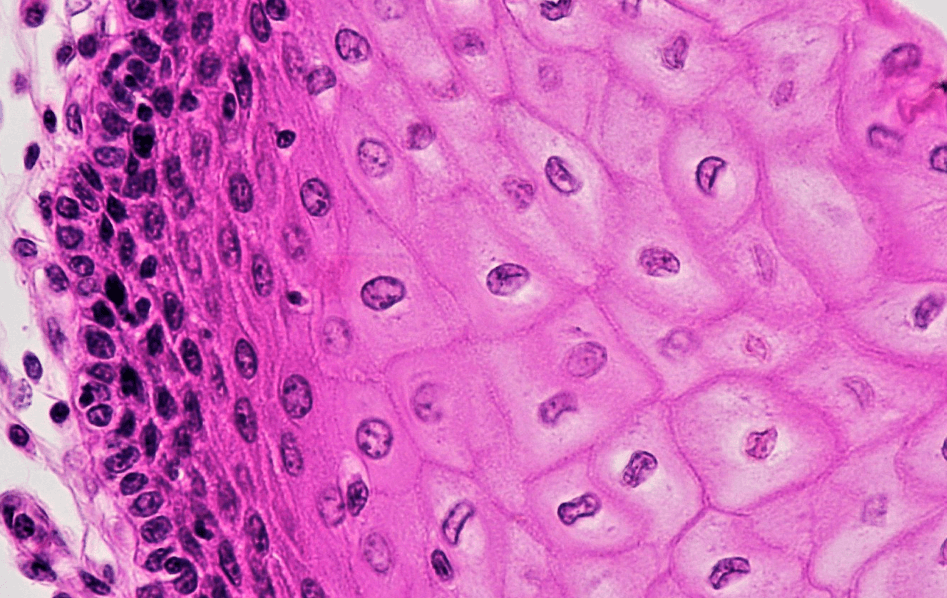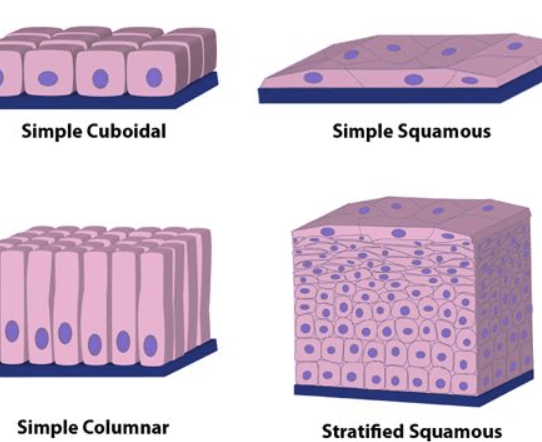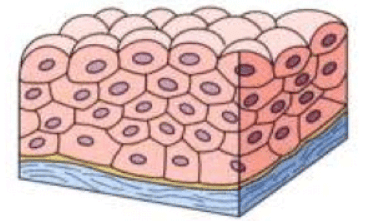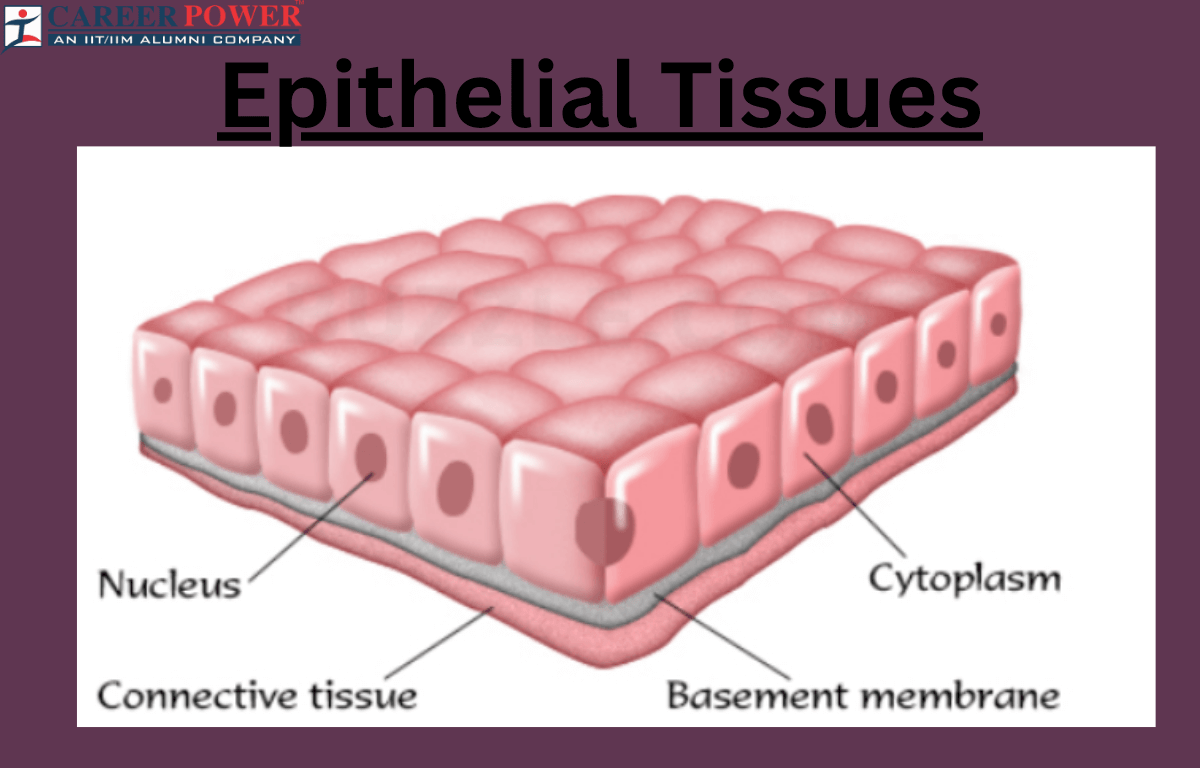Tissues are a group of cells working together to perform specific functions in living organisms. There are four main types of tissues: Epithelial Tissues, Connective Tissues, Muscle Tissues, and Nervous Tissues. These tissues collaborate to maintain the structure and function of organs and ensure the proper working of the organisms. Epithelial Tissues shield, connective tissues support, muscle tissues move, and nervous tissues transmit signals for coordination. In this article, we will learn about the Epithelial Tissue.
Types of Tissues
There are mainly three types of Tissues namely: Connective Tissues, Epithelial Tissues, Muscle Tissues, and Nervous Tissues. The table below highlights their descriptions.
| Different Types of Tissues | |
| Types | Description |
| Epithelial Tissues | Epithelial tissues act as a protective barrier and cover body surfaces like skin or lines of internal organs. |
| Connective Tissues | Connective Tissues provides support and connects different structures. Examples include bone, blood, and cartilage. |
| Muscle Tissues | Enables movement by contracting and relaxing. They are of three different types namely Skeletal, smooth, and cardiac muscles. |
| Nervous Tissues | Nervous Tissues are composed of neurons, that carry electrical signals for communication in the nervous system. |
What are Epithelial Tissues?
Epithelial tissues are like the body’s protective skin, forming a barrier between different body compartments and the external environment. You can picture them as the body’s security team, lining surfaces and structures to shield against potential threats. These tissues are found covering organs, both inside and outside the body, safeguarding against bacteria, viruses, and other harmful elements. Just as skin shields the body from the outside world, epithelial tissues perform a similar role internally.

Epithelial tissues are tightly packed, creating a strong, continuous layer. They often have specialized structures like cilia or microvilli to enhance their functions, such as moving substances or increasing surface area for absorption. Epithelial tissues serve multiple purposes, including absorption, secretion, and protection. Their location and structure vary based on their specific functions, but collectively, these tissues work harmoniously to defend and maintain the body’s integrity.
Structure of Epithelial Tissues
Epithelial tissues are like the body’s protective skin. They form layers that cover and line various surfaces, acting as a barrier against external factors. These tissues are often arranged in sheets, with minimal space between them. Epithelial tissues come in different shapes and arrangements, like a variety of tiles in a mosaic. Some epithelial tissues are flat, while some are cube-shaped or column-shaped. The arrangement and shape depend on the tissue’s location and function. Epithelial tissues cover organs, and line cavities, and protect against bacteria and dehydration.
Types of Epithelial Tissues
Epithelial Tissues are layers of closely packed cells that cover body surfaces and lines of internal organs. These epithelial tissues are mainly of two different types based on the number of layers present namely: Simple Epithelial Tissues and Compound Epithelial Tissues. These Epithelial Tissues play crucial roles in maintaining the structure and function of various organs and surfaces within the body.
| Different Types of Epithelial Tissues | |
| Types | Description |
| Simple Epithelial Tissues | Simple Epithelial tissues consist of a single layer of closely packed cells lining the surface. They facilitate absorption, secretion, and protection in organs like intestines and lungs. |
| Compound Epithelial Tissues | Compound epithelial tissues have multiple layers of cells, providing protection. Found in skin and mucous membranes, they defend against abrasions and external factors, supporting barrier functions. |
Simple Epithelial Tissues
Simple epithelial tissues are like protective skin for organs and body surfaces. They are like a thin, single layer of cells tightly packed together, forming a smooth surface. They are found in areas where absorption, secretion, or filtration is crucial, like the lining of the digestive tract or Kidney tubules.
Types of Simple Epithelial Tissues
There are mainly three types of Simple Epithelial Tissues which are named: Simple Squamous Tissues, Simple Cuboidel Tissues, and Simple Columnar Tissues. All these types of Simple Epithelial Tissues serve different functions depending on their location in the body.

- Simple Squamous Tissues: Single layer of flat cells, found in areas where diffusion or filtration is essential, such as in the lining of blood vessels and air sacs in the Lungs.
- Simple Cuboidal Tissues: Single layer of cube-shaped cells, commonly found in glandular tissues and the lining of kidney tubules.
- Simple Columnar Tissues: Single layer of elongated, column-shaped cells. It lines the digestive tract and is involved in absorption and secretion.
Glandular Epithelium [Glands]
The glandular epithelium is a modification of Simple Cuboidel Tissues, and Simple Columnar Tissues. They form glands, which are classified into different types based on the number of cells and the presence or absence of ducts. On the basis of the number of cells, the glandular epithelium is divided into two types Unicellular and Multicellular. Whereas on the basis of the presence or absence of ducts glandular cells are of three types: Exocrine, Endocrine, and Hetrocrine.
Compound Epithelial Tissues
Compound epithelial tissues are layers of cells covering surfaces and lining organs. Unlike simple epithelial tissues, they consist of multiple layers of cells, providing added protection. They are also known as stratified epithelial tissues. This arrangement helps withstand wear and tear, making compound epithelial tissues suitable for areas exposed to mechanical stress or external factors.

Types of Compound Epithelial Tissues
The Compound Epithelial Tissues are mainly of two different types namely: Stretcheble Compound Epithelial Tissues and Non-Stretchable Compound Epithelial Tissues. The stretchability of tissue
- Stretchable Compound Epithelial Tissues: These Stretchable Tissues are generally found in the urinary bladder, capable of stretching to accommodate changes in urine volume.
- Stretchable Compound Epithelial Tissues: Most other types of epithelial tissues, including simple and stratified varieties, do not possess significant stretchability in their primary function.
Watch the complete Video on Epithelial Tissue:



 50 Vegetables Name for Kids in English a...
50 Vegetables Name for Kids in English a...
 Food Chain: Definition, Types, Examples,...
Food Chain: Definition, Types, Examples,...
 Human Respiratory System: Definition, Di...
Human Respiratory System: Definition, Di...













